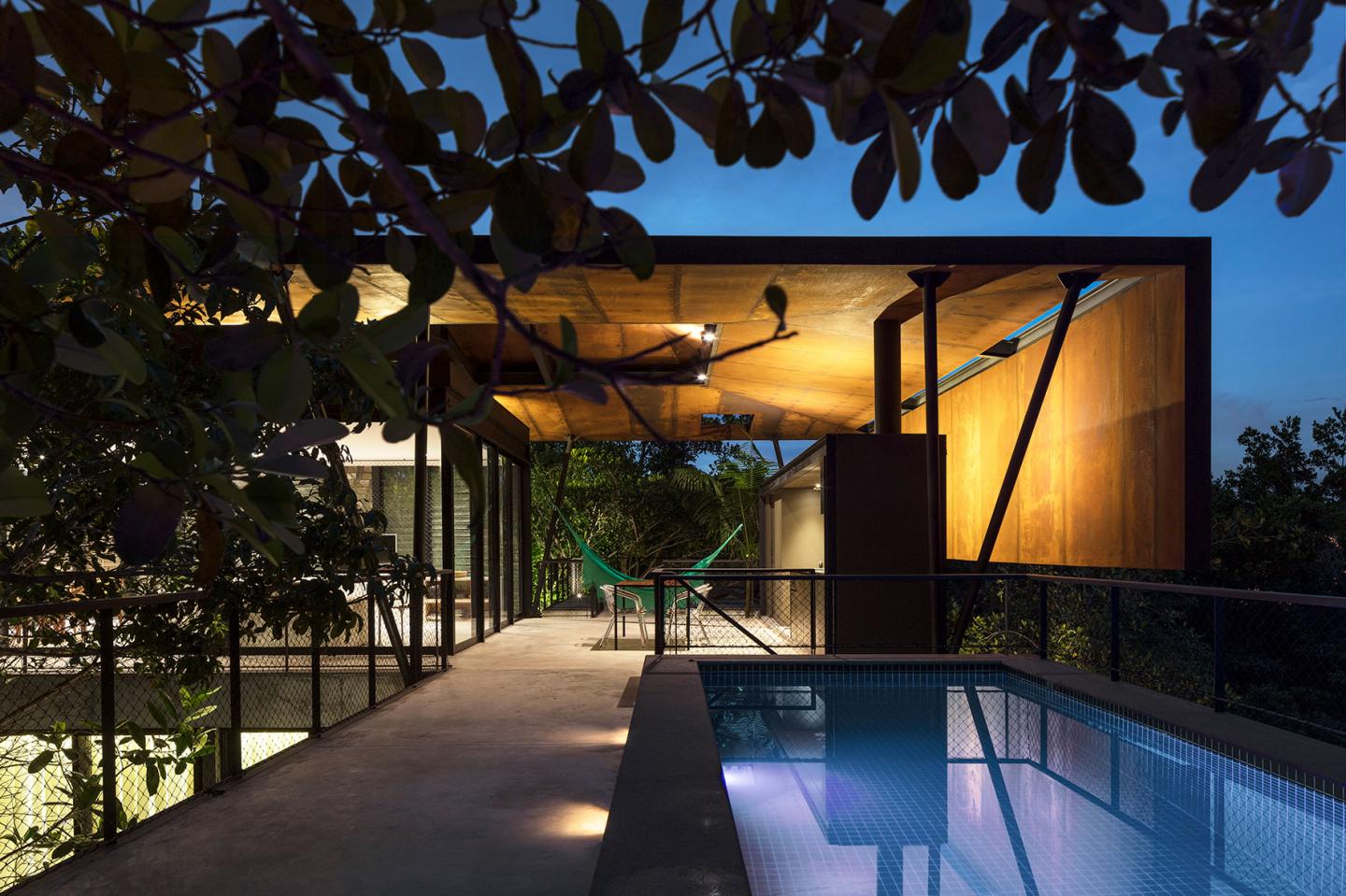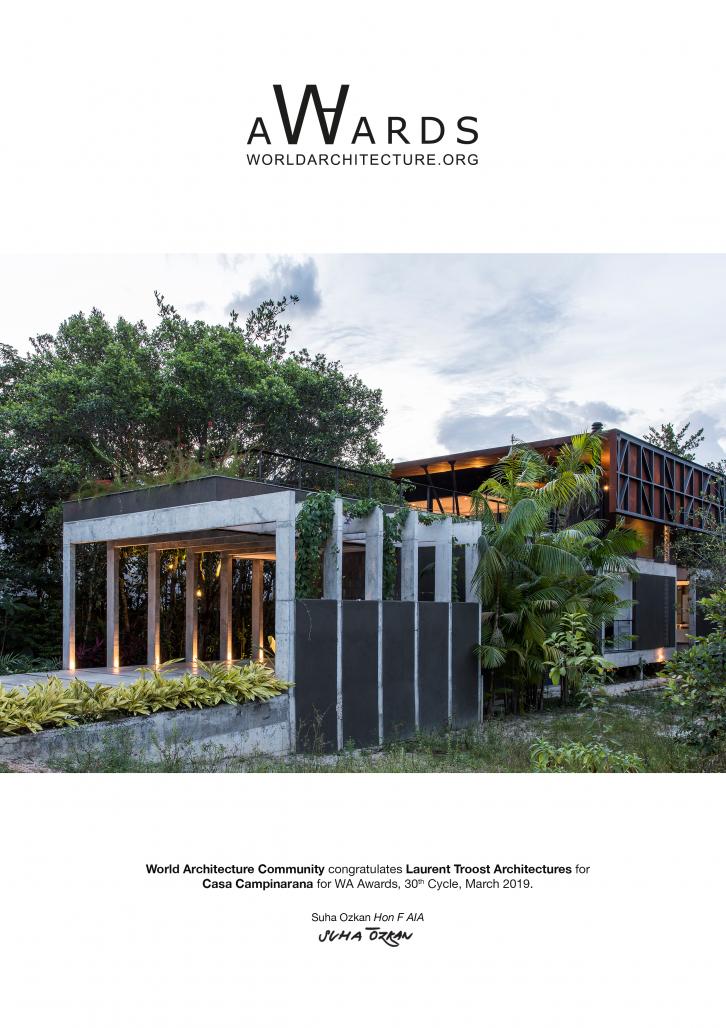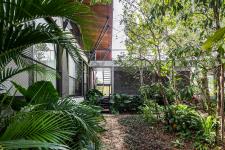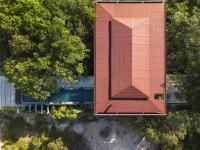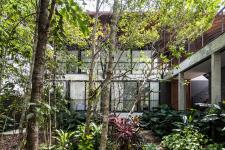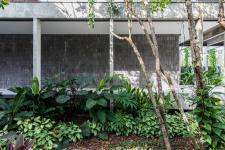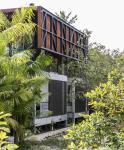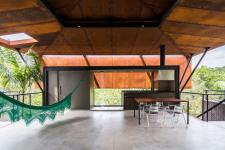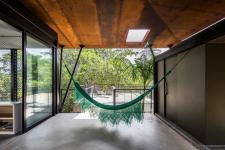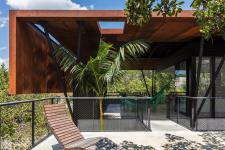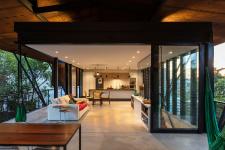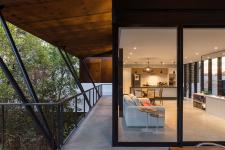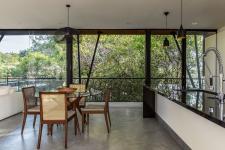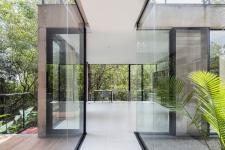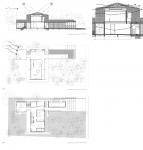The Amazon, more than any other area on the planet, requires climate-appropriate architectural strategies. The natural and environmental conditions are extreme and the proximity of the equatorial zone requires an architecture oriented towards thermal comfort and "passive" sustainability, that is, adequate deployment, creation of protective eaves, dimensioning and orientation of the openings for cross ventilation, as well as preservation of local ecological systems.
The preservation and valorization of Campinarana - a type of Amazon forest characterized by small trees, whose soil is shallow and clayey - was the starting point for the concept of the project. To minimize deforestation and preserve as much as possible of the Forest, the main architectural strategy for construction in the 20 x 40 m plot was the reversal of the classic housing typology. At Casa Campinarana the rooms are located on the ground floor and the internal living environments, the outside seating and the swimming pool, are located on the upper deck.
In order to optimize the relationships between external and internal spaces and to optimize exposure to climatic factors, the house was divided into two large volumes: a longilineal and a transversal one. The longilineal volume houses functions that do not need to be protected from the sun, such as the access, the garage, the storage room, the pool, the laundry, the quarry and the TV room. The transversal volume houses functions that need to be protected from the sun and rains, such as the living room, dining room, kitchen and bedrooms.
The main transversal volume received a contemporary reinterpretation of the colonial roofs, with 8 pitches in 2 independent levels, allowing the fruition of the winds and the creation of an air mattress in the in-between space, protecting the thermal comfort of the living space of the upper floor of the house. The reduced width of the main volume is designed to guarantee cross ventilation in all environments. This passive energy strategy adapted to the climate allows a very low energy consumption.
On the East and West side, the roof consists of lateral vertical planes that protect the inhabited spaces from the first and last rays of equatorial sun. There was also the concern to create an independent roof of the house, with the construction of eaves of two meters to the North and to the South, supported only by eight supports in "V". The roof, therefore, can dilate in function of the thermal variation and insolation throughout the year, without compromising the structure of the house.
The choice of Corten as roof material was due to its low maintenance and evolutionary character in harmony with the Forest of Campina and its reddish clay soil so present in the landscapes of the Amazon.
In addition to the guaranteed cross ventilation with its sliding windows on both sides and the glass fins on the third side, the fully glazed living room allows complete integration with the covered terrace, solarium, pool and nature.
Casa Campinarana was selected for the XAMA exhibition - 30 works from the last 30 years in Amazonia (which took place in Manaus, Rio Branco and Boa Vista in 2018), as well as the IAB nomination for the Oscar Niemeyer 2018 Award, which establishes the best of Latin American architecture every two years.
2012
2018
Built area: 232 m² (Internal area) | 366 m² (Built area)
Project: 2012|2017
Completion: 2018
Architecture: Laurent Troost
Architecture Team: Laurent Troost, Raquel Brasil dos Reis
Structure: Eng. Flávio Carvalho
Technical Engineer: Eng. Raimundo Onety
Landscape Design: Laurent Troost, Hana Eto Gall, Edith Eto Gall
Furnitures: MMCité, Dellanno
Construction: Helena Rabello, Daniel Herzson
Pictures: Leonardo Finotti, Maíra Acayaba
Casa Campinarana by laurent troost in Brazil won the WA Award Cycle 30. Please find below the WA Award poster for this project.
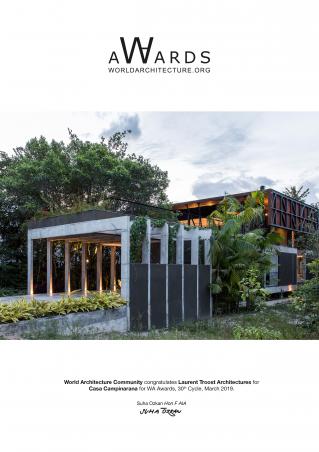
Downloaded 44 times.
Favorited 1 times
